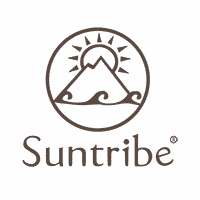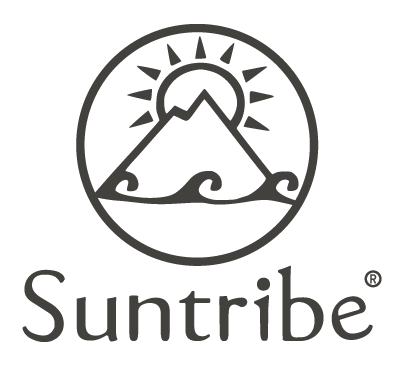SPF, UVA & UVB
You can easily get the feeling that sunscreen is a whole science in itself, and fun fact, it is! To make it easier for you to get a good overview of what words like UVA, UVB and SPF actually mean we have compiled this summary with everything you need to know about sunscreen and the science behind it.
What does UVA, UVB & UVC mean?
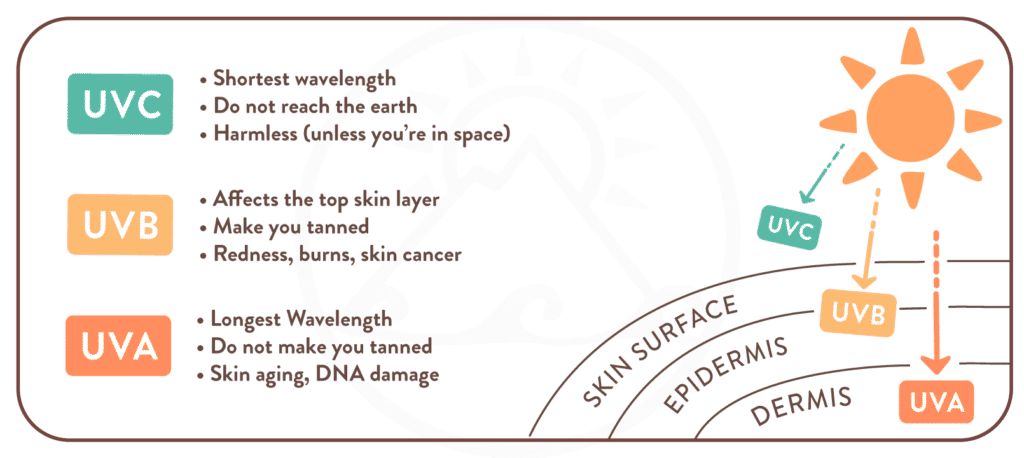
UVB, UVA and UVC rays are all part of the ultraviolet light that travel towards earth from the sun. UVC rays are absorbed by the ozone layer, so you don’t have to worry about them. UVB & UVB rays on the other hand do reach the surface, and that’s why you need sunscreen! UVB rays are only blocked in part by the atmosphere. They are responsible for tanning your skin but too much exposure to them can lead to sunburn and consequently, skin cancer. UVB rays affect the top layer of your skin.
UVA rays have the longest wavelength and travel through the atmosphere almost uninterrupted. These rays reach the deepest layer of the skin called the “Dermis”.
Research shows UVA rays can lead to the creation of harmful free radicals in the skin. To put it simply, exposure to them can cause cancer by damaging the proteins that repair your DNA. Not good! Therefore it’s important to put on sunscreen if you’re planning on spending time in the sun. Unlike UVB rays, UVA rays are sneaky in the way that they do not make you tanned. Therefore, it is hard to know whether you have been exposed to a risky amount of UVA rays. You can read more about UVA, UVB and UVC rays in our blog article about Why Daily Sun Protection is Important.
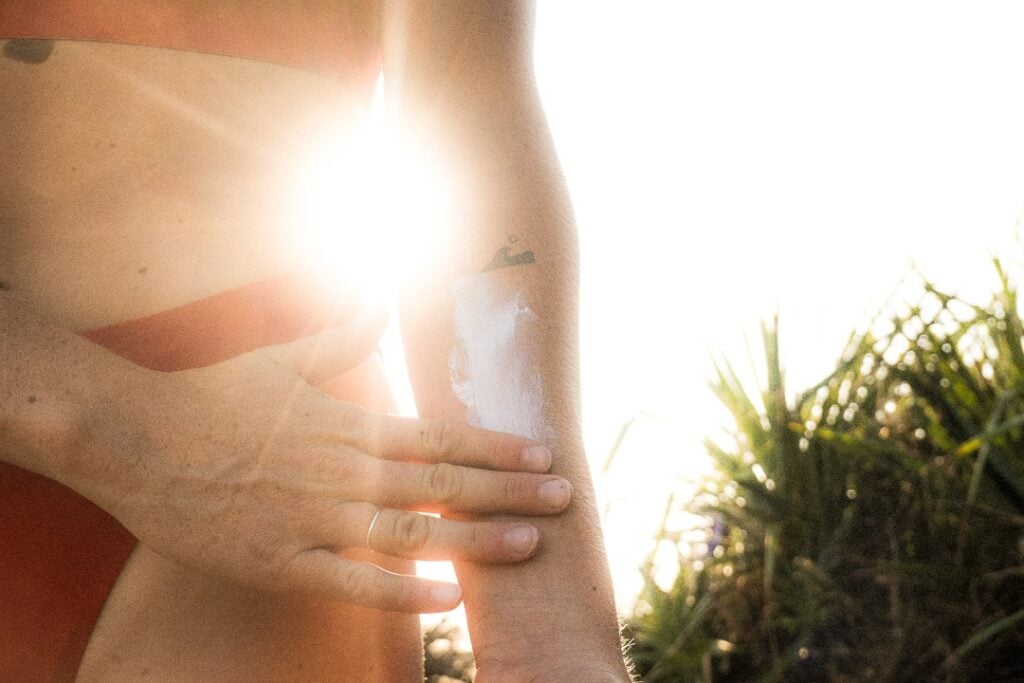
What does SPF mean?
The Sun Protection Factor (SPF) on a sunscreen label shows the amount of protection from UVB rays. An interesting fact that most people do not know about is that the SPF scale is not linear. For example, SPF 15 blocks 93% of UVB rays, SPF 30 blocks 97% of UVB rays and SPF 50 blocks 98% of UVB rays. The difference between SPF 30 and SPF 50 is only one percentage point! Crazy, right?
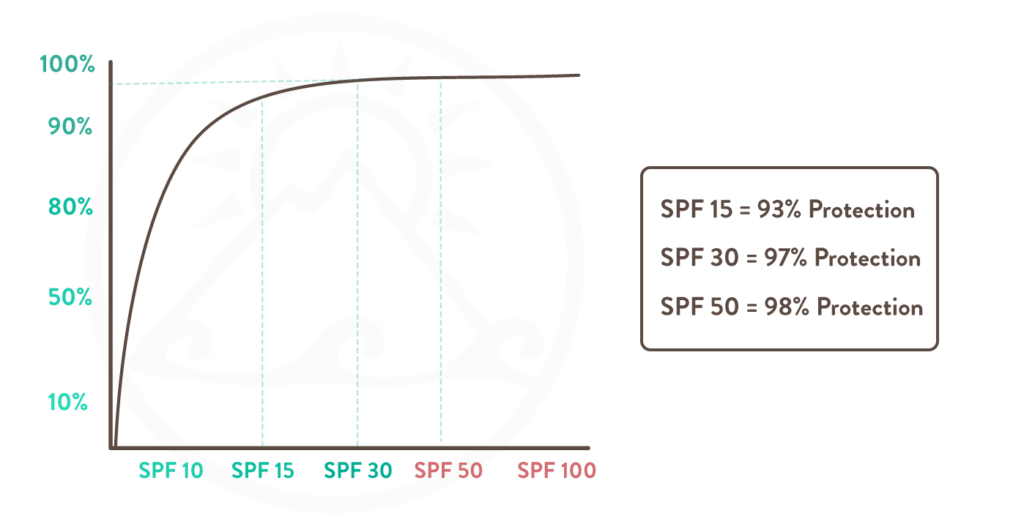
Since a sunscreen’s SPF is only fully effective for two hours after you put it on, it is recommended to re-apply your sunscreen every two hours independent of the sun protection factor on the bottle. In our blog article Why SPF 30 is The New SPF 50 you can read more about what makes our SPF 30 sunscreens a safe and effective choice for your skin.
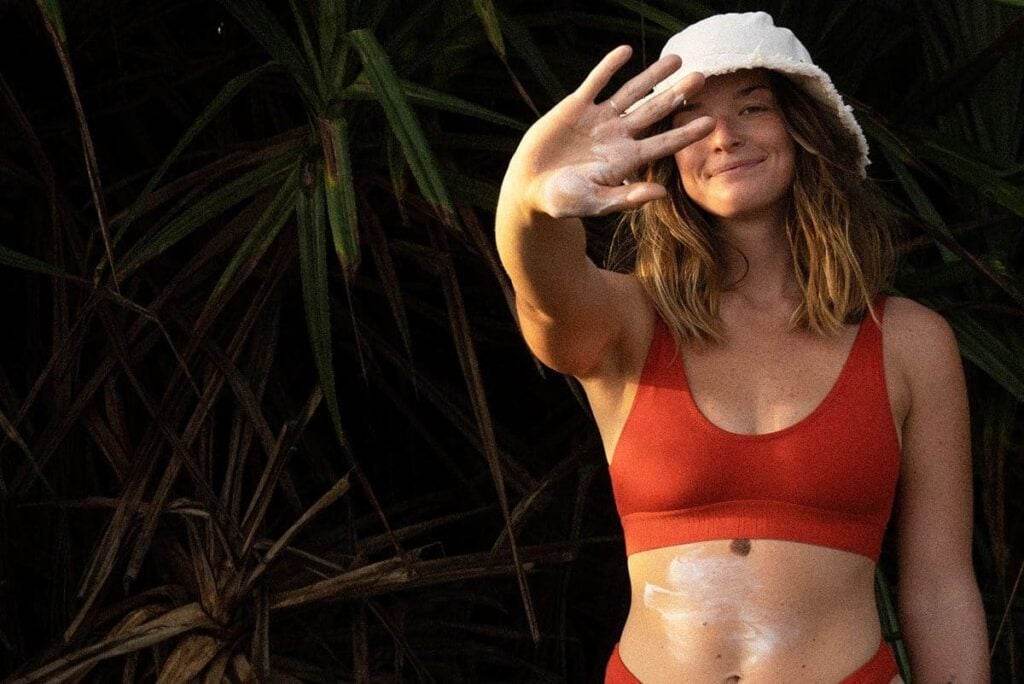
How do You Know Your Sunscreen Blocks UVA rays?
As we just learned, the SPF only refers to the degree of protection from UVB. So how do you know if your sunscreen also blocks UVA rays? The answer is called broad spectrum protection. If your sunscreen carries a label reading “broad spectrum” on it or you find a circle stating “UVA”, it means the sunscreen blocks an “appropriate amount” of UVA rays as defined by the regulating authorities. All sunscreens from Suntribe offer broad spectrum protection and protect you against UVA rays, but definitely not all sunscreens do, so look out!
To make things even more confusing, the UVA test is related to the UVB / SPF test. So, when a sunscreen is tested to confirm broad spectrum protection (meaning that it provides appropriate protection against UVA) the protection is measured as a relation against its SPF. To pass, a sunscreen has to block at least 1/3 of the labelled SPF, e.g. an SPF 30 sunscreen (blocking 97% of UVB rays) needs to block UVA rays with the equivalent power of an SPF 10 (blocking around 89%).
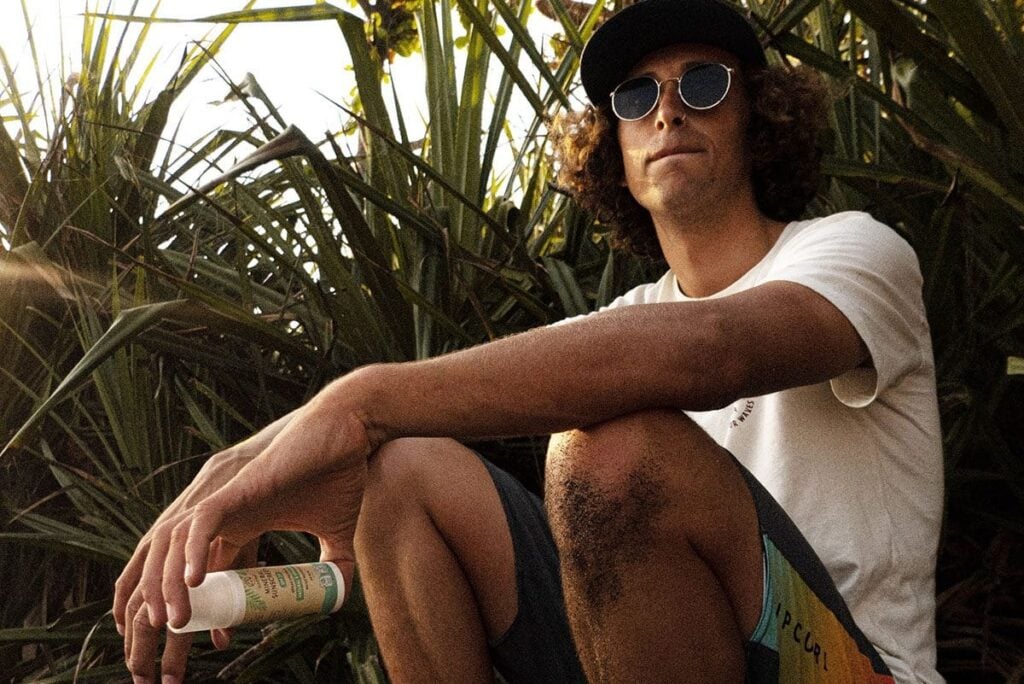
The good thing about Suntribe sunscreens is that we only use Zinc Oxide as a UV filter, which is the most effective UV-filter around. This means that our sunscreens do not just offer the required 1/3 (33%) of the protection, but a lot more! The UVA protection of our All Natural Zinc Sunscreen for Face & Sport for example is actually 9/10 (90%) of its SPF 30 protection, meaning that our zinc sunscreens provide far above the required UVA protection. All our other sunscreens also provide far above the required UVA protection.
What Does Water Resistance Mean?
If your sunscreen is labeled to be water resistant, it means that the sunscreen will keep its effectiveness for a certain period of time when in contact with water (or a lot of sweat). To make things clear: All liquid sunscreens start to gradually lose effectiveness after first contact with water. The water resistance marking indicates that the sunscreen still has at least 50% of its labeled SPF protective powers after a certain time. This time frame is either 40 or 80 minutes.
• The phrase water resistance means that a sunscreen will still have half of its labeled SPF after a time frame of 40 minutes.
• The phrase very water resistant means that a sunscreen will still have half of its labeled SPF after a time frame of 80 minutes.
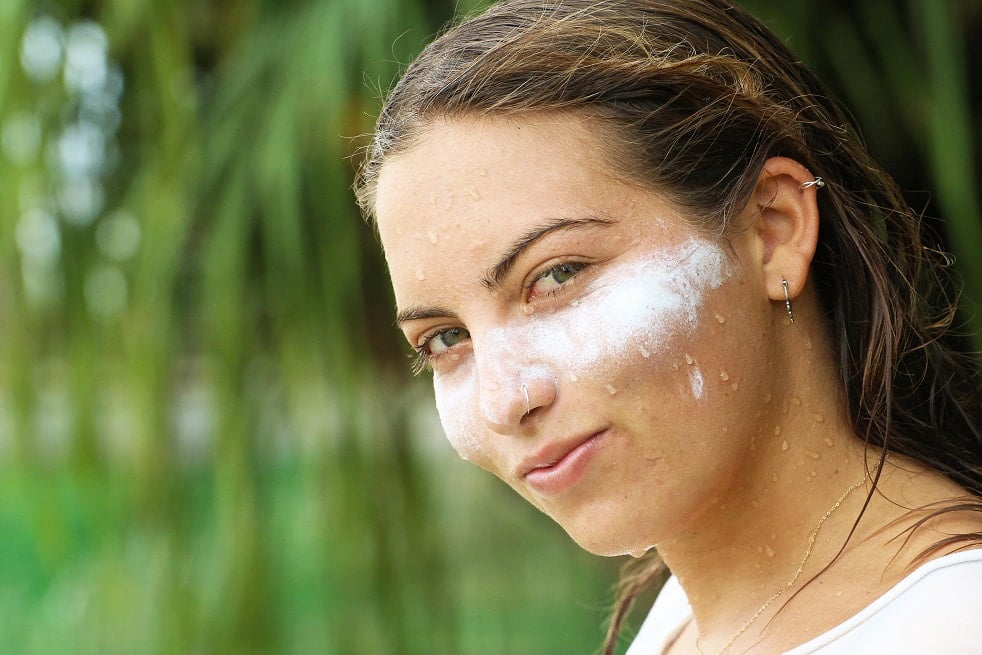
The water resistance test is done in a lab, where the test subjects place their arm (with sunscreen applied to it) in a pool for either 40 or 80 minutes and the sun protection factor is tested before and after the arm was put in the water.
To pass the sunscreen needs to still have at least half of its SPF value after the time in water. It’s important to know that the water resistance test was made for liquid sunscreens. Because there are sunscreens that can resist way more than 80 minutes of water contact without losing SPF, like Suntribe’s Face & Sport series.
These sunscreens are generally very thick and leave a visible layer of protection. With mineral sunscreens, a visible layer of protection is the best way to determine if you need to re-apply your sunscreen after water contact.
With liquid sunscreens, such as the All Natural Mineral Sunscreen, we recommend to regularly re-apply after coming out of the water or when sweating a lot. This is the best and safest way to ensure you are protected, even when in contact with water.
Thanks for reading!
We hope you feel like you’re ready to head out in the sun again, now that you know which UV rays you should be careful about and how to pick a safe and effective sunscreen. Want to make sure you are protected against the sun? Then just follow the link below and have a look at our sunscreens.

